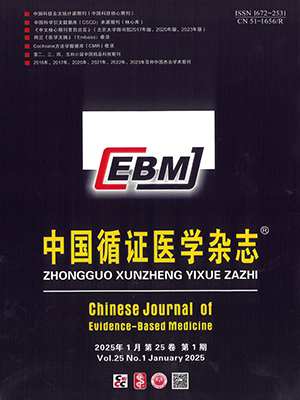| 1. |
余健, 辛艳飞, 宣尧仙. 参麦注射液药理作用的物质基础研究进展. 医药导报, 2013, 32(4): 497-500.
|
| 2. |
胡晶, 张雯, 谢雁鸣, 等. 参麦注射液治疗急性心肌梗死的Meta分析. 中国中药杂志, 2012, 37(18): 2760-2767.
|
| 3. |
Su X, Ma Y, Huang R, et al. Effects of shenmai injection on blood SOD activity and MDA level in senile patients with coronary heart disease. J Tradit Chin Med, 2005, 25(1): 50-53.
|
| 4. |
陈弘东, 谢雁鸣, 王连心, 等. 参麦注射液辅助治疗慢性心力衰竭的有效性及安全性系统评价. 中国中药杂志, 2014, 39(18): 3650-3661.
|
| 5. |
胡元春, 谢雁鸣, 杨薇, 等. 基于HIS的参麦注射液治疗肿瘤临床用药特征真实世界研究. 中国中药杂志, 2014, 39(18): 3509-3513.
|
| 6. |
王连心, 程豪, 谢雁鸣, 等. 基于倾向性评分的不同疗程使用参麦注射液肝肾功能变化分析. 中国中药杂志, 2013, 38(18): 3053-3059.
|
| 7. |
原卫生部. 药品不良反应报告和监测管理办法(中华人民共和国卫生部第81号令), 2011. Available at: http://www.nhc.gov.cn/wjw/bmgz/201105/b442a66fc52b4793a57160002ac2a1a9.shtml.
|
| 8. |
韩利文, 张友刚, 李昊楠, 等. 参麦注射液治疗新型冠状病毒肺炎(COVID-19)合并冠心病的网络药理分子机制探析. 中草药, 2020, 51(9): 2334-2344.
|
| 9. |
王春燕, 王希营, 金红. 新型冠状病毒诊疗方案(试行第七版). 兰州大学学报(医学版), 2020, 46(2): 1-7.
|
| 10. |
中国心血管病报告编写组. 《中国心血管病报告2016》概要. 中国循环杂志, 2017, 32(6): 521-530.
|
| 11. |
王维琼. 2016年中国恶性肿瘤发病和死亡分析. 临床医药文献电子杂志, 2017, 4(19): 3604.
|
| 12. |
赵云平. 参麦注射液对老年高血压患者脉压指数、脉搏波传导速度及血脂的影响研究. 中国医药导报, 2013, 10(15): 94-95, 101.
|
| 13. |
黄秋阳. 参麦注射液联合硫酸镁治疗妊娠期高血压病的临床观察. 中国中医药科技, 2015, 22(1): 83-84.
|
| 14. |
张志华, 刘达燕, 武成荣. 参麦注射液联合硝酸甘油治疗慢性心力衰竭的有效性和安全性研究. 中国药物与临床, 2019, 19(4): 652-654.
|
| 15. |
浦清, 华玮, 居培红, 等. 参麦注射液治疗老年心力衰竭患者的临床研究. 中国临床保健杂志, 2017, 20(1): 92-93.
|
| 16. |
杜婧, 杨薇, 易丹辉, 等. 基于HIS数据库“真实世界”的参麦注射液临床用药规律. 中国中药杂志, 2011, 36(20): 2813-2816.
|
| 17. |
王连心, 谢雁鸣, 杨薇, 等. 基于HIS真实世界的参麦注射液临床实效研究. 中国中药杂志, 2012, 37(18): 2710-2713.
|




